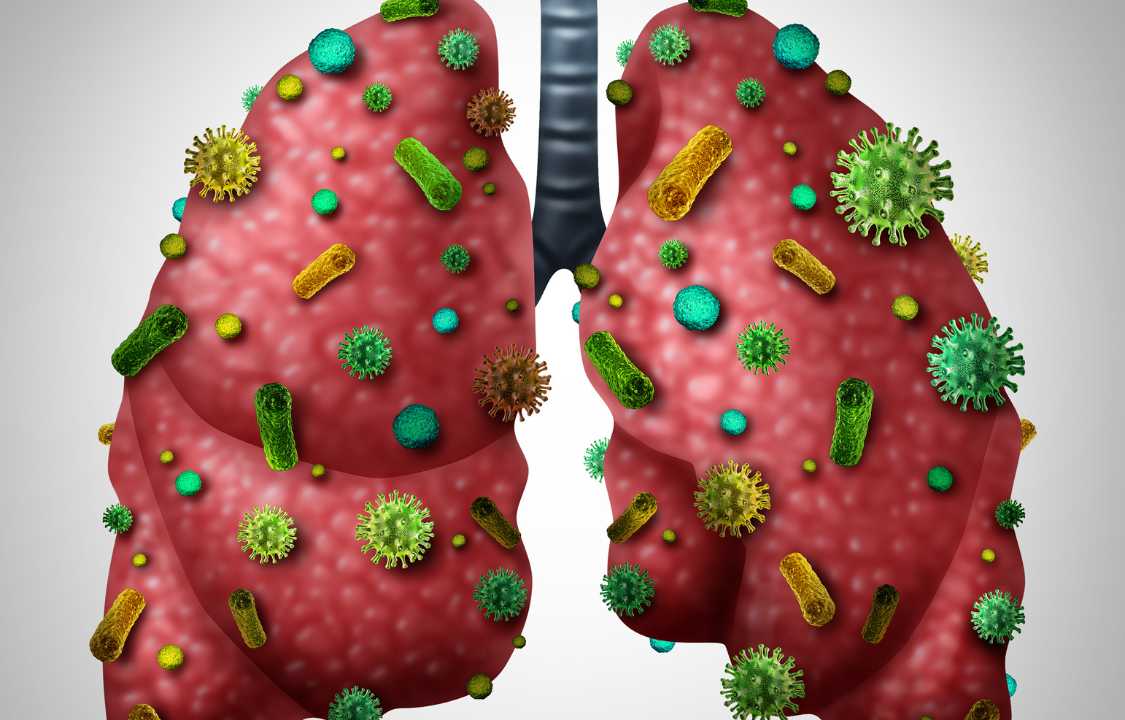Health Care, Infection, Inflammation, Insight
What To Know About Double Pneumonia—An Infection in Both Lungs
Bilateral pneumonia affects both lungs and may be more serious than pneumonia in a single lung.
A diagnosis of pneumonia can be a daunting revelation, signaling an infection in the lungs accompanied by inflammation and fluid buildup, resulting in distressing symptoms like chest pain, fever, and shortness of breath. When healthcare providers offer a pneumonia diagnosis, they often provide critical details, such as whether the infection is viral or bacterial, its location within the lungs, and whether it affects one or both lungs.
Defining Bilateral Pneumonia
Pneumonia that engulfs both lungs is commonly referred to as “double pneumonia.” However, healthcare professionals more precisely label it as “bilateral pneumonia.” While bilateral pneumonia shares similarities with pneumonia affecting a single lung, it is typically considered more serious due to the extensive involvement of a larger portion of the lungs.
The Anatomy of Pneumonia
To comprehend bilateral pneumonia, it is essential to grasp some basic aspects of lung anatomy. The infection and inflammation in pneumonia target the air sacs within the lungs, known as alveoli. Alveoli are small, balloon-shaped structures responsible for oxygen exchange, facilitating the transfer of oxygen into the bloodstream while removing carbon dioxide.
When these air sacs become infected and inflamed, they fill with fluid or pus, leading to symptoms such as cough, fever, chills, and breathing difficulties, as described by the National Heart, Lung, and Blood Institute (NHLBI).
Symptoms of Bilateral Pneumonia
Symptoms of bilateral pneumonia closely resemble those of pneumonia affecting a single lung. However, due to the involvement of both lungs, bilateral pneumonia may present with a heightened severity of symptoms. Raymond Casciari, MD, a pulmonologist at St. Joseph Hospital in Orange, California, explains that while chest pain can occur in both single and double pneumonia, it may manifest on both sides of the chest in bilateral pneumonia.
Typically, the most prevalent pneumonia symptoms, as outlined by NHLBI, encompass:
- Chest pain during breathing or coughing
- Chills
- Cough with or without mucus
- Fever
- Low blood oxygen levels, often measured with a pulse oximeter
- Shortness of breath
In addition to these primary symptoms, individuals with pneumonia may experience secondary symptoms such as headaches, muscle pain, fatigue, nausea, vomiting, and diarrhea, as noted by NHLBI.
Causes of Bilateral Pneumonia
Bilateral pneumonia can be triggered by various microorganisms, including bacteria, viruses, and fungi, mirroring the causative agents responsible for single pneumonia. Viral infections, however, are more likely to involve both lungs, according to Dr. Casciari. Prominent viral culprits responsible for bilateral pneumonia include the SARS-CoV-2 virus responsible for COVID-19, among others.
Dr. Thomas Monaco, MD, an assistant professor of pulmonary and critical care medicine at the Baylor College of Medicine, emphasizes that viral infections are a common instigator of bilateral pneumonia. Mycoplasma pneumoniae, a type of atypical bacteria, can also lead to a milder form of pneumonia involving both lungs. Legionella pneumophila, another bacterial strain, is known to extensively affect both lungs.
However, it is essential to note that the specific microbe causing the infection is not the sole determinant of the condition’s severity. An individual’s underlying risk factors play a pivotal role. Factors such as smoking, heavy drinking, heart disease, lung diseases (such as asthma or chronic obstructive pulmonary disease), compromised immune systems, age extremes (very young or very old), and coexisting medical conditions (such as diabetes or cancer) can elevate the risk of experiencing more severe pneumonia, as outlined by NHLBI.
Treatment of Bilateral Pneumonia
The choice of treatment for bilateral pneumonia is contingent on its underlying cause, clarifies Dr. Shweta Sood, MD, a pulmonologist and assistant professor of clinical medicine at Penn Medicine. Treatment options include:
1. Antibiotics: For bacterial pneumonia in relatively healthy individuals, outpatient treatment with antibiotics is often sufficient. In severe cases, hospitalization and intravenous antibiotics may be necessary.
2. Rest: Viral pneumonia typically necessitates rest and hydration, with some cases not requiring any medication.
3. Antivirals: In severe viral pneumonia, antiviral medications like remdesivir may be employed.
4. Antifungals: Fungal pneumonia is treated with antifungal medications, which may be administered intravenously in severe bilateral pneumonia cases.
5. Breathing Support: Individuals with pneumonia involving both lungs are more likely to require supplemental oxygen or mechanical ventilator support.
It is essential to acknowledge that pneumonia, including bilateral pneumonia, is one of the top 10 causes of death in the United States, according to the Centers for Disease Control and Prevention (CDC). Dr. Casciari emphasizes that pneumonia, while serious, becomes even more critical when it affects both lungs.
When to Seek Medical Attention
If you suspect the presence of bilateral pneumonia, it is crucial not to panic. “Fortunately, most patients with pneumonia will recover without any long-lasting effects,” assures Dr. Monaco. However, if you experience symptoms commonly associated with pneumonia, it is advisable to promptly inform a healthcare provider. Prompt medical evaluation is vital, especially if you manifest severe difficulty breathing, an exceptionally high fever, or extreme chest pain, which may signify an emergency. In such cases, immediate medical care is imperative.
In conclusion, bilateral pneumonia, often colloquially referred to as double pneumonia, represents a more extensive and potentially severe form of lung infection. It shares numerous symptoms with single pneumonia but typically presents with greater intensity. The causative agents can encompass a spectrum of microorganisms, including viruses, bacteria, and fungi. Treatment strategies are tailored to the specific cause and severity of the condition. While pneumonia is a serious medical concern, timely intervention and appropriate management contribute significantly to favorable outcomes, and most individuals recover without lasting effects. If you experience symptoms indicative of pneumonia, particularly severe ones, seeking immediate medical attention is paramount to ensure the best possible outcome.

